Microplastics, tiny plastic particles measuring less than 5 millimeters, have become a significant concern for water quality. These particles can originate from various sources such as plastic debris, synthetic fibers, and microbeads. When microplastics contaminate water sources, they can have detrimental effects on human health and ecosystems. In this guide, we will explore effective solutions to remove microplastics from water, ensuring cleaner and safer water for you and the environment.
1. Understanding microplastics
1.1. What is microplastics?
Microplastics are miniscule particles of plastic that measure less than five millimeters. They can be either intentionally manufactured at a small size (primary microplastics) or result from the degradation and fragmentation of larger plastic items (secondary microplastics.
Read more: Microplastic: the unseen threat to our oceans and planet
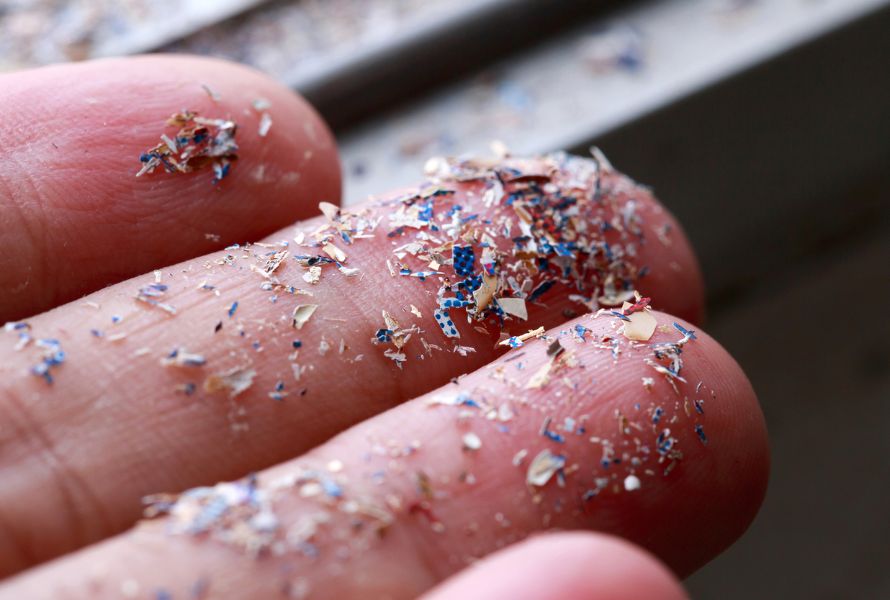
Small plastic particles smaller than five millimeters are known as microplastics
1.2. Why should we get rid of microplastics in water?
Due to their small size, microplastics pose several environmental and health concerns. They can be ingested by aquatic organisms, leading to potential bioaccumulation and biomagnification throughout the food chain. In humans, microplastics have been found in various consumables, including drinking water, seafood, and even the air we breathe. While the exact health impacts are still being studied, there is growing concern about the potential risks they may pose to human health.
2. How to remove microplastics from water?
2.1. Ceramic Water Filters for microplastic removal
Ceramic water filters can effectively remove larger microplastics from water due to their small pore sizes. The pores in ceramic filters are typically in the range of 0.1 to 0.9 micrometers, which allows them to physically trap and retain particles larger than the pore size. This includes many microplastics that are larger than 0.1 micrometers. However, it's important to note that ceramic filters may have limited effectiveness in removing smaller microplastics or dissolved microplastics, as these may pass through the pores.
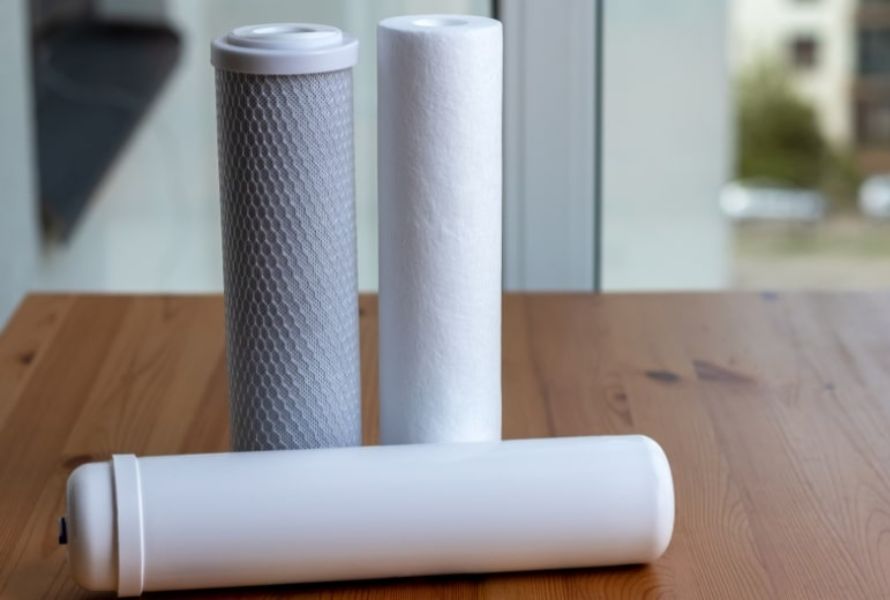
Because of their tiny pore sizes, ceramic water filters are effective at removing larger microplastics from water
2.2. Nanofiltration: Removing microplastics with precision
Nanofiltration membranes have smaller pore sizes compared to ceramic filters. While they are primarily designed to remove dissolved substances, such as salts and organic matter, nanofiltration can also help in removing certain types of microplastics. The smaller microplastics that are not effectively removed by ceramic filters may be captured by the smaller pores of the nanofiltration membrane. However, it's important to note that the effectiveness of nanofiltration in removing microplastics may depend on factors such as microplastic size, charge, and composition.
2.3. Reverse Osmosis Filtration systems: Highly effective microplastic removal
Reverse osmosis (RO) is highly effective in removing microplastics from water. The RO membrane has extremely small pores, typically in the range of 0.0001 micrometers, which can effectively remove microplastics of various sizes. The small pore size of the membrane allows it to physically reject and retain most microplastics, including both larger and smaller particles. Reverse osmosis is considered one of the most efficient methods for removing microplastics from water.
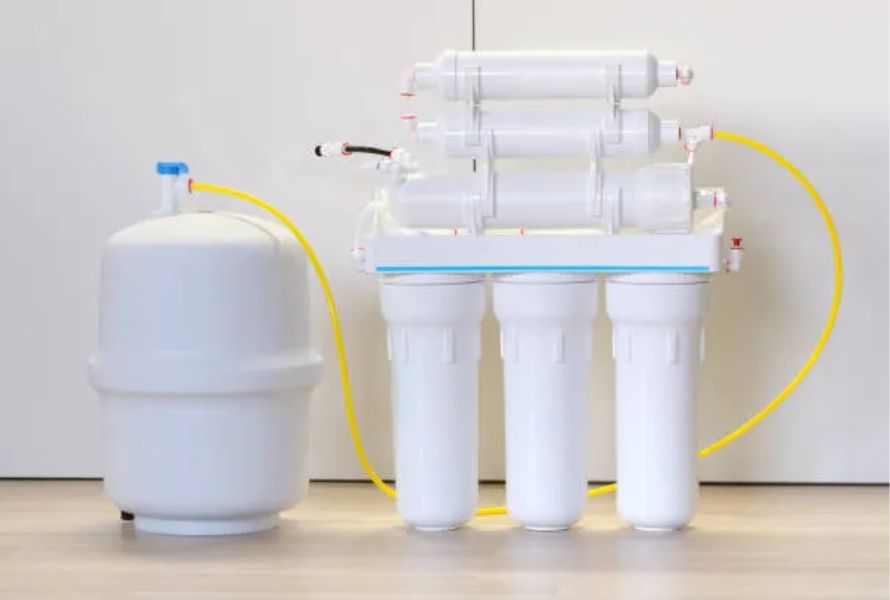
One of the best techniques for getting rid of microplastics from water is reverse osmosis
2.4. Activated carbon water filters: Reducing microplastics in water
Activated carbon filters primarily focus on removing organic compounds and chemicals from water. While they may not be specifically designed for microplastic removal, activated carbon filters can still contribute to reducing microplastics to some extent. The porous structure of activated carbon can physically trap and adsorb larger microplastics present in the water. However, smaller microplastics or dissolved microplastics may not be effectively captured by the activated carbon and may pass through the filter.
2.5. Water distillers: Microplastic-free water
Water distillers are effective in removing microplastics from water. During the distillation process, water is heated to create steam, which is then condensed back into liquid form. Microplastics, being larger particles, are left behind during the boiling and condensation process and are not carried over with the steam. Consequently, the collected distilled water is typically free from microplastics.
2.6. Ultrafiltration: Getting rid of larger microplastics in water
Ultrafiltration (UF) membranes can effectively remove larger microplastics from water. The pore sizes of UF membranes typically range from 0.001 to 0.1 micrometers, allowing them to physically retain microplastics of various sizes. UF membranes act as a physical barrier, allowing water and smaller particles to pass through while retaining larger contaminants, including microplastics. However, smaller microplastics or dissolved microplastics may not be effectively removed by UF membranes.
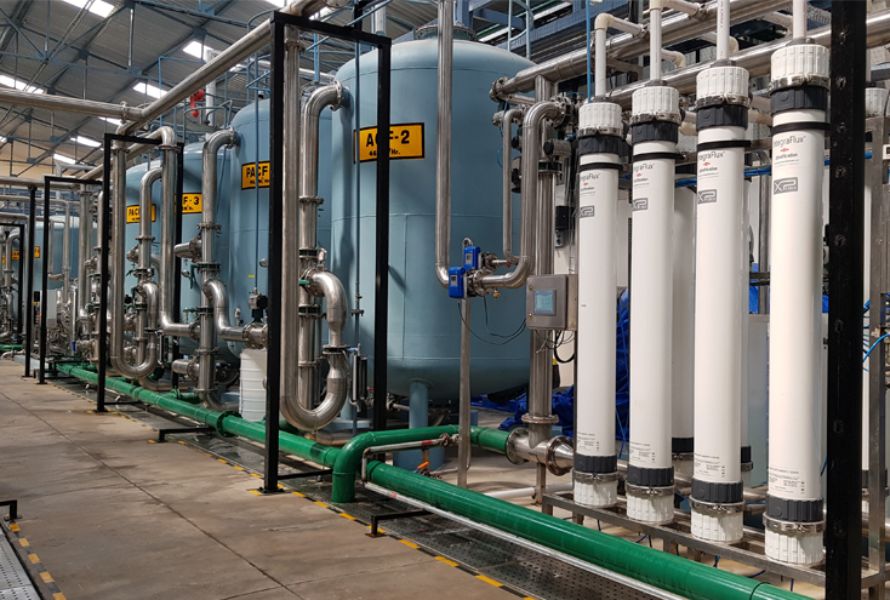
Larger microplastics in water can be efficiently removed by ultrafiltration (UF) membranes
2.7. Coagulation/Flocculation: Effective microplastic removal technique
Coagulation and flocculation are commonly used in water treatment processes to remove suspended particles, including microplastics. Chemical coagulants, such as aluminum sulfate or ferric chloride, are added to water to destabilize and aggregate the particles, forming larger flocs. These flocs can then be removed through sedimentation or filtration processes, effectively reducing the concentration of microplastics in the water.
2.8. Advanced Oxidation Processes (AOPs): Breaking down microplastics
AOPs are a group of chemical processes that use reactive oxygen species, such as ozone, hydrogen peroxide, or ultraviolet (UV) light, to degrade and break down organic compounds, including microplastics. These processes generate highly reactive radicals that can attack and oxidize the microplastic molecules, leading to their decomposition. AOPs can be effective in reducing the concentration of microplastics in water, but they are often used as part of a broader water treatment system.
2.9. Electrocoagulation: Clumping and removing microplastics
Electrocoagulation is a process that uses an electric current to destabilize and aggregate suspended particles, including microplastics, in water. The method involves passing an electric current through electrodes, usually made of aluminum or iron, causing the formation of metal hydroxide coagulants. These coagulants interact with microplastics, causing them to clump together and settle out of the water. Electrocoagulation can be an effective method for microplastic removal, particularly when combined with subsequent filtration steps.

When used in conjunction with further filtration stages, electrocoagulation can be a successful technique for removing microplastic
2.10. Biological treatment: Microplastic removal through biodegradation
Some studies have explored the use of biological treatment methods, such as biodegradation by microorganisms, for microplastic removal. Certain microorganisms, including bacteria and fungi, have the ability to break down and degrade microplastics through enzymatic processes. However, the effectiveness of biological treatment for microplastic removal is still an area of ongoing research, and its application in large-scale water treatment is limited.
3. How to test for microplastics in water?
Testing water for the presence of microplastics is crucial to assess contamination levels and determine the effectiveness of removal methods. Various testing methods can be employed, including:
3.1. Microscopy
Microscopy techniques, such as optical microscopy or electron microscopy, can be used to visually identify and characterize microplastic particles in water samples. This method involves collecting a water sample and filtering it through a fine filter with a known pore size, such as a membrane filter. The filter is then examined under a microscope to identify and count the microplastic particles. Optical microscopy can provide information about the size, shape, and color of the particles, while electron microscopy can provide more detailed information about their surface characteristics.
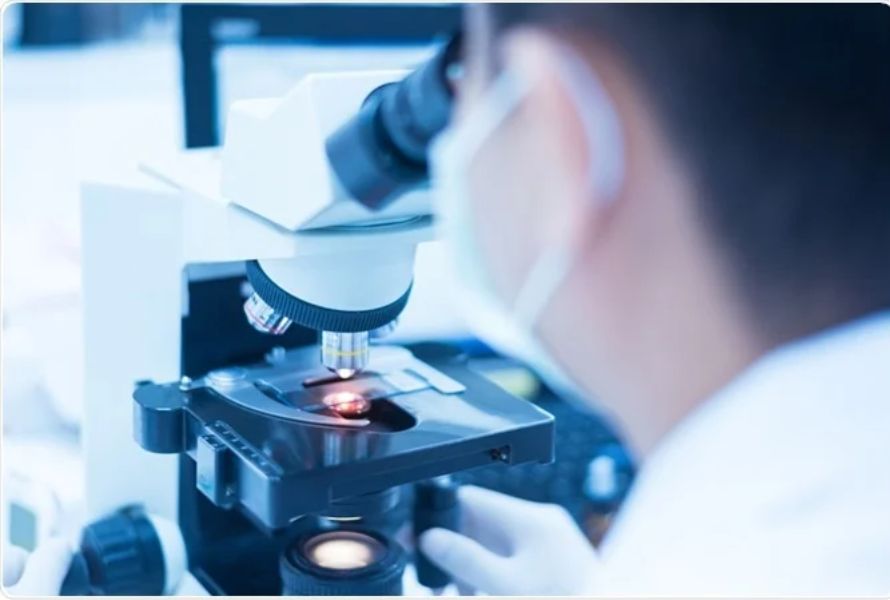
Microplastic particles in water samples can be visually identified and characterized using microscopy techniques
3.2. Spectroscopy
Infrared spectroscopy (FTIR) is a common analytical technique used to identify microplastic particles. This method relies on the unique spectral fingerprints of different types of plastics. A small sample of water is filtered to collect the microplastic particles, which are then analyzed using FTIR. The spectrum obtained from the analysis is compared to a database of known plastic spectra to identify the types of microplastics present.
3.3. Fluorescence analysis
Fluorescence analysis can be used to detect microplastics based on their fluorescent properties. Some microplastic particles may exhibit natural fluorescence or can be labeled with fluorescent dyes for easier detection. This method involves filtering a water sample to collect the microplastics, and then examining the filter under a fluorescence microscope or using a fluorescence spectrometer to detect the emitted fluorescence.
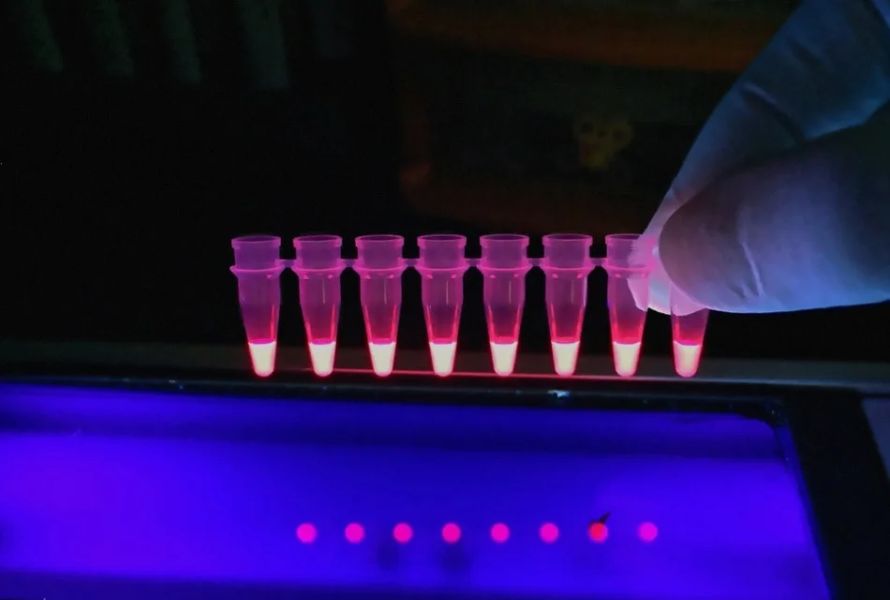
Based on their fluorescence characteristics, fluorescence analysis can be used to identify microplastics
3.4. Raman spectroscopy
Raman spectroscopy is another technique used to identify microplastics. It involves irradiating the microplastic particles with a laser and analyzing the scattered light to obtain a unique molecular fingerprint. Raman spectroscopy can provide information about the chemical composition of microplastics and can be used to differentiate them from other materials present in the water sample.
3.5. Microplastic extraction and quantification
Microplastic extraction and quantification methods involve separating microplastics from the water sample and determining their concentration. Various extraction techniques can be used, such as density separation using salt solutions or density gradient centrifugation, where microplastics float or sink depending on their density. After extraction, the microplastics are counted and measured using microscopy or other techniques to determine their concentration in the water sample.
4. Conclusion
Removing microplastics from water is crucial to safeguarding our health and the environment. By utilizing a combination of filtration methods, distillation, coagulation, advanced oxidation processes, and biological treatments, we can significantly reduce microplastic contamination in our water sources. Implementing microplastics removing solutions will help us significantly reduce microplastic contamination in our water sources and lead to cleaner, safer water and a healthier future for all. Remember, every step we take towards microplastic removal contributes to a more sustainable and pristine water ecosystem.
In addition, if you are looking for a source of good quality plastic, Europlas will be a reliable place. We offer a wide range of high-quality plastic products that are designed with environmental sustainability in mind:
- Bioplastic compound: BiONext is a biodegradable plastic compound with exceptional mechanical and aesthetic qualities that was created exclusively by EuroPlas. BiONext bioplastic compounds are derived from renewable sources like PLA, PHA, and plant materials such as corn and palm oil. They offer the advantage of biodegradability, breaking down into water, CO2, and biomass within 12 months. This promotes a circular life cycle and aligns with sustainable development principles.
- Bio Filler: Biofiller is a cost-effective solution for bioplastic processing, improving product properties and competitiveness. EuP offers diverse biofiller product lines, such as BiOMates 01, 02, and 03, tailored to meet customer needs.
Visit our website or contact us directly to explore our exceptional range of sustainable plastic solutions. Let's co-create a greener future together!